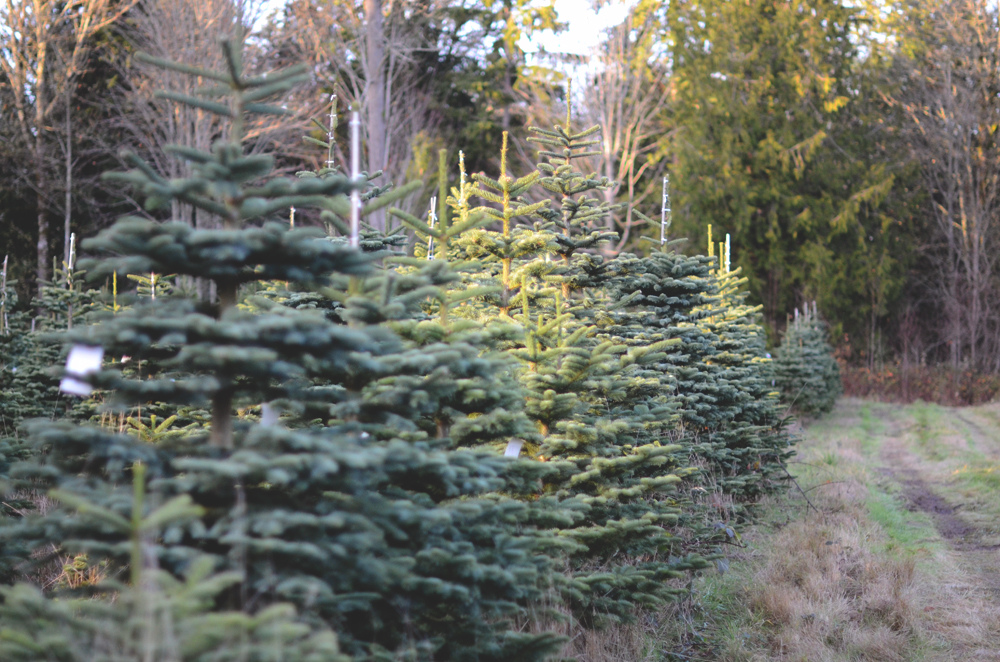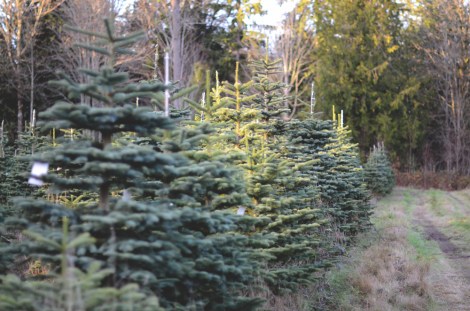Ohhhh, Christmas tree.
We may be engaging in a fierce war on Christmas right now, but y’all know we love trees — even the Christmas kind! Well, wait, maybe.
Christmas trees play into a wider debate among environmentalists: Are tree farms better or worse at carbon sequestration than untouched forests?
The answer may surprise you: A study on North Carolina tree farms published last month looked at the farms’ unique ability to sequester and soak up a whole lot of atmospheric carbon. From Mother Jones:
Tree farm soil, [researcher Samantha] Chapman says, can absorb 10 times as much carbon as the wood itself. Cutting down on herbicide use and providing groundcover between rows of firs can double that concentration of carbon in the soil. The researchers’ goal is to see if carbon sequestration could potentially be profitable for struggling Christmas tree farmers who want to sell offsets, or amounts of carbon dioxide emissions avoided. If legislation is passed to limit emissions of greenhouse gases, these kinds of offsets could be sold to polluters who want to make up for their emissions elsewhere.
“The carbon builds up in the soil over time,” Chapman told me over the phone. “Some is sugar that’s eaten quickly, and some of it sticks around for thousands of years. And that’s the kind of soil we’re interested in capturing.”
The Post, though, is more hung up on what happens to the trees come Dec. 26. Basically: Bah, humbug.
According to research out of Oregon in the 1990s, 58 percent of felled trees are used for paper, mulch, firewood or other short-term purposes. In those cases, the tree’s sequestered carbon quickly reenters the atmosphere after decomposing or burning. The remaining 42 percent is used in ways that keep the wood intact more than five years, such as homebuilding and furniture production. Even in those cases, though, the carbon doesn’t stay sequestered forever.
By this Scroogey logic our own bodies are also intrinsic polluters! But the Sierra Club agrees: Rent a living tree instead, they implore the eco-minded. Don’t be responsible for yet another tragic early tree death!
There are several Christmas tree rental companies throughout California catering to a particular kind of customer: People who care about the environment but want to drive kind of far in their SUV to pick up a potted tree.
From the Santa Cruz Sentinel:
Rent a Living Christmas Tree in Carmel, which rents trees to families for the season and then takes them back, estimates they will rent about 1,000 trees this year …
Formed in 2009, Rent a Living Christmas Tree has seen its leases grow from 300 that first year to 600 by 2011, and the owners are excited about what they say is growing word-of-mouth advertising.
In the other direction up the coast, San Jose Christmas Tree Rentals offers 20-day live holiday trees for lease and delivery to Santa Cruz County — as well as San Francisco, Los Gatos and Monterey. The trees range from 6 to 11 feet and go for $95 to $350.
So why opt for a live tree?
“It’s good for nature,” said Susan Draper, a first-time renter from Carmel. “You don’t cut down a tree that will die.”
If you’re SUV-free, you can also opt for the tree to be trucked to your home.
Me, I’ll be upcycling this holiday season with the little Charlie Brown twig I found in the park.





